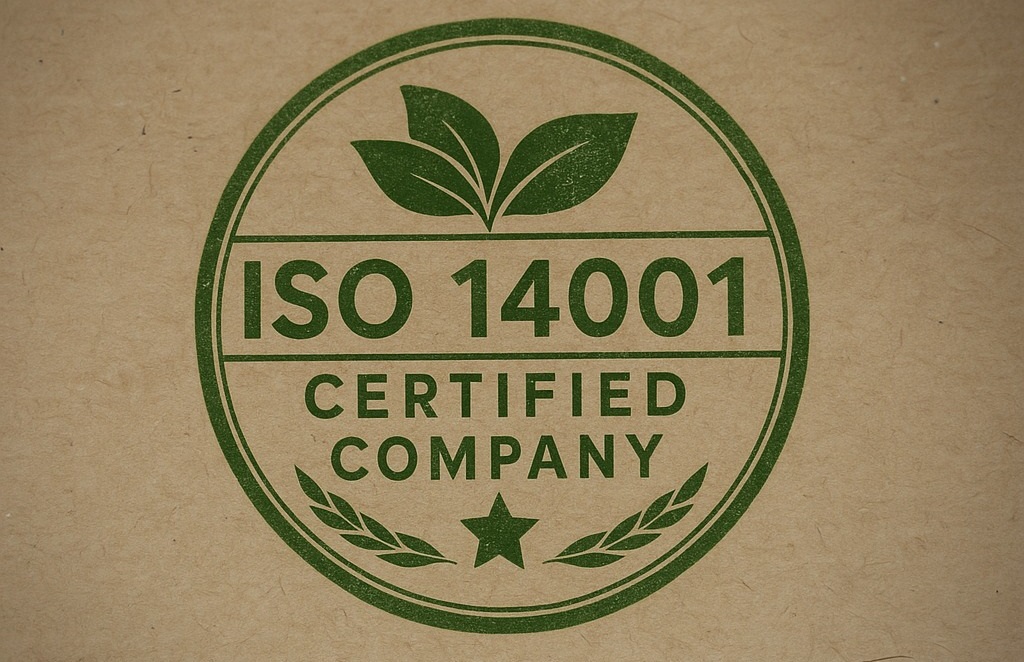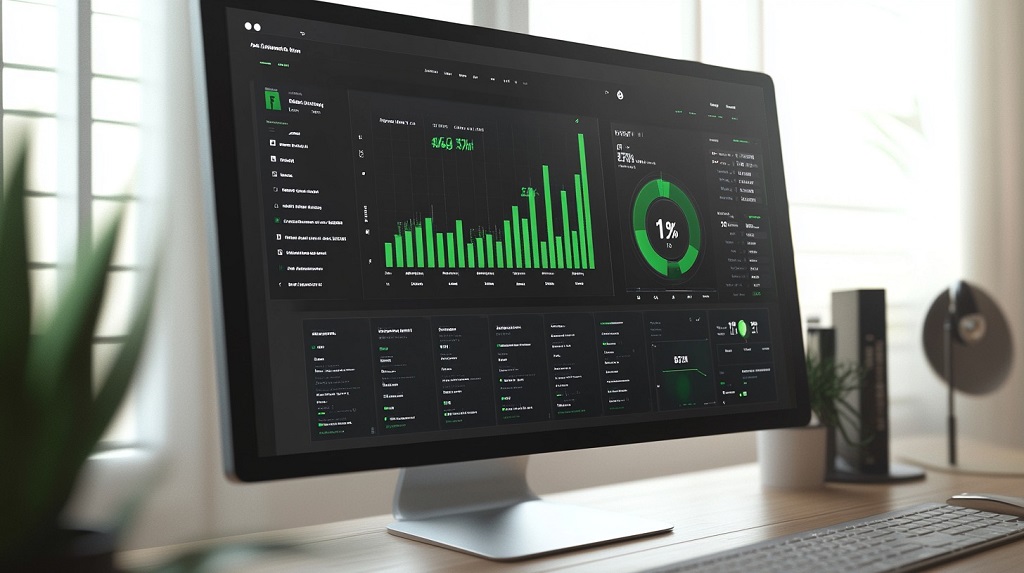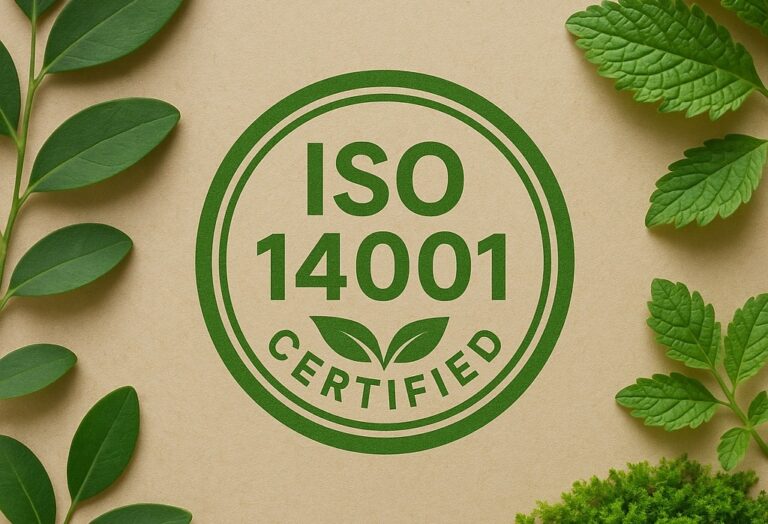Meeting ISO 14001 reporting standards is crucial for any organization seeking to implement an effective environmental management system (EMS).
The ISO 14001 standard provides a framework for organizations to manage their environmental responsibilities in a systematic manner that contributes to sustainability.
It outlines the requirements for creating, implementing, and improving an EMS, ensuring that environmental impacts are minimized.
To meet ISO 14001 reporting standards, an organization must follow specific guidelines related to environmental impact assessment, legal compliance, risk management, and continuous improvement.
Overview

ISO 14001 is part of the ISO 14000 family of standards for environmental management. It provides a framework that organizations of all sizes and types can follow to improve their environmental performance.
The reporting standards within ISO 14001 emphasize transparency, consistency, and accountability in managing environmental impacts. These standards ensure that organizations:
- Track their environmental performance.
- Measure and report on their environmental impact regularly.
- Maintain records that demonstrate compliance with environmental laws and regulations.
- Continuously improve their environmental performance.
Key Reporting Requirements
To meet ISO 14001 standards, companies must focus on key areas of reporting, including:
- Environmental Impact Monitoring: Documenting and assessing the direct and indirect environmental impacts of activities, products, and services.
- Legal and Regulatory Compliance: Demonstrating compliance with applicable environmental laws and regulations.
- Objectives and Targets: Setting measurable environmental goals, monitoring progress, and reporting on outcomes.
- Internal Audits and Management Reviews: Conducting regular audits of the EMS and reviewing performance at the senior management level.
- Non-Conformance and Corrective Actions: Reporting on incidents of non-compliance or failures and actions taken to correct them.
Steps to Meet ISO 14001 Reporting Standards
1. Establish a Robust Environmental Management System (EMS)

The foundation of ISO 14001 compliance is a well-structured Environmental Management System (EMS). This system serves as the operational framework that guides an organization’s efforts to reduce its environmental footprint.
An EMS includes clear processes for monitoring, measuring, and improving environmental performance.
Key Components of an EMS:
| EMS Component | Description |
| Environmental Policy | A formal statement from senior management that outlines the organization’s commitment to environmental sustainability. |
| Planning | Identifying environmental aspects and determining the actions needed to mitigate significant impacts. |
| Implementation | Establishing procedures, assigning responsibilities, and allocating resources. |
| Monitoring and Measurement | Continuously tracking environmental performance against set targets. |
| Review and Improvement | Regularly reviewing EMS performance to identify areas for improvement. |
Having an EMS in place helps ensure compliance with the ISO 14001 reporting requirements. The EMS must be integrated into daily operations and be fully supported by all levels of the organization, from top management down to staff.
To finalize your EMS documentation for distribution, you can export to PDF to ensure consistency and ease of sharing.
2. Conduct Environmental Impact Assessments
The first step to reporting in compliance with ISO 14001 is conducting a comprehensive environmental impact assessment (EIA).
This assessment helps identify the areas where the company’s activities affect the environment, such as emissions, waste production, water usage, and resource consumption.
Understanding these impacts is essential for setting up appropriate mitigation actions and achieving measurable environmental objectives.
Steps in Conducting an EIA:
- Identify Environmental Aspects: Determine the environmental aspects of activities, products, and services. For example, an industrial facility may have emissions, waste generation, and water usage as significant environmental aspects.
- Assess Environmental Impacts: Analyze how these aspects affect the environment. For example, high water usage in a manufacturing plant may lead to local water depletion.
- Determine Significance: Not all environmental impacts are of equal importance. It is essential to evaluate the severity and likelihood of each impact to prioritize actions.
- Establish Action Plans: For significant environmental impacts, create specific action plans that define mitigation strategies, such as reducing emissions, minimizing waste, or implementing more efficient resource usage.
3. Set Measurable Environmental Objectives and Targets

ISO 14001 requires organizations to set environmental objectives and targets that are measurable, time-bound, and consistent with the company’s environmental policy.
These objectives can relate to reducing emissions, conserving energy, or minimizing waste production, among others.
Setting clear targets helps provide a benchmark for the organization’s environmental performance and demonstrates a commitment to continuous improvement.
Example:
An organization may set a target to reduce its carbon footprint by 10% over the next three years.
To achieve this, they may implement strategies such as switching to renewable energy sources, optimizing production processes, or improving waste recycling.
4. Monitor and Measure Environmental Performance

Once environmental objectives and targets are set, organizations must regularly monitor and measure progress to ensure they are on track to meet these goals.
ISO 14001 requires ongoing data collection and performance tracking. Key performance indicators (KPIs) can be used to assess the effectiveness of an EMS.
Key Monitoring Activities:
- Energy Consumption: Track the amount of energy used by different operations to identify opportunities for energy efficiency improvements.
- Water Usage: Measure water consumption to reduce wastage and identify potential savings.
- Waste Management: Track waste production and disposal methods to ensure compliance with environmental regulations and to minimize waste output.
- Emissions Tracking: Regularly monitor and report on greenhouse gas emissions and other pollutants to ensure compliance with environmental laws and reduce environmental impact.
Organizations should use monitoring tools such as automated sensors, data collection systems, and environmental management software to streamline this process.
Effective monitoring helps identify problems early and allows for timely corrective actions.
5. Ensure Legal and Regulatory Compliance
ISO 14001 requires companies to comply with all relevant environmental laws and regulations. This includes local, regional, and international laws that govern emissions, waste disposal, resource usage, and other environmental factors.
Failure to comply with these laws not only jeopardizes ISO 14001 certification but also exposes the organization to legal penalties.
How to Ensure Compliance:
- Keep Up-to-Date with Legislation: Regularly review and stay informed about changes in environmental regulations at local, national, and international levels.
- Assign a Compliance Officer: Appoint a dedicated environmental compliance officer to track and ensure adherence to legal requirements.
- Maintain Records: Document compliance efforts, including licenses, permits, reports, and inspections, to provide evidence during audits or inspections.
By staying on top of legal requirements, organizations can avoid costly penalties and ensure that their EMS remains compliant with ISO 14001 standards.
6. Conduct Internal Audits and Management Reviews

Internal audits and management reviews are critical components of the ISO 14001 standard. Audits help evaluate the effectiveness of the EMS, identify areas for improvement, and ensure compliance with ISO 14001 requirements.
Management reviews, on the other hand, provide senior leadership with insights into the EMS’s performance and areas that need attention.
Key Steps:
- Schedule Regular Audits: Conduct internal audits at least annually to assess EMS performance and compliance.
- Audit Documentation: Maintain detailed records of audit findings, including non-conformances and areas for improvement.
- Management Review Meetings: Hold regular meetings with senior management to discuss audit results, review the effectiveness of the EMS, and determine corrective actions.
As organizations work toward meeting ISO 14001 standards, they rely on accurate, credible environmental data to guide their decision-making and demonstrate compliance. Credibility of environmental research is essential for understanding the potential impact of their operations and identifying strategies to mitigate these impacts effectively.
Accurate environmental research is not only necessary for compliance but also helps improve overall sustainability performance.
Whether gathering data on energy consumption, emissions, or water usage, organizations must rely on high-quality research sources, such as academic studies, government reports, and industry analyses.
This data helps organizations prioritize environmental goals and measure the success of their strategies in real time.
Both audits and management reviews are vital for continuous improvement, which is a core principle of ISO 14001.
7. Report on Environmental Performance

Reporting is a key aspect of meeting ISO 14001 standards. The standard requires that organizations document and communicate their environmental performance both internally and externally.
Regular environmental reports should cover:
- Progress Towards Objectives: How well the organization is achieving its environmental goals.
- Key Performance Indicators: Metrics such as waste reduction, energy consumption, and emissions levels.
- Non-Conformances and Corrective Actions: Any instances where the organization has failed to meet its targets, along with the actions taken to correct these failures.
- Environmental Achievements: Notable improvements, such as reductions in carbon emissions or waste diversion.
Organizations should ensure that their reporting is accurate, consistent, and easily accessible for stakeholders.
8. Implement Corrective and Preventive Actions
When issues or non-conformances are identified during audits or monitoring, corrective actions must be taken. These actions are designed to address the root causes of problems and prevent them from recurring.
ISO 14001 also requires organizations to implement preventive actions to proactively reduce the likelihood of future environmental issues.
Steps to Take:
- Identify Root Causes: Use techniques like the “5 Whys” or fishbone diagrams to identify the underlying causes of non-conformances.
- Implement Corrective Actions: Develop and implement plans to fix the identified issues.
- Prevent Future Issues: Take steps to address potential future environmental impacts, even if they have not yet occurred.
This proactive approach to management helps to continuously improve environmental performance and maintain ISO 14001 certification.
Conclusion
Meeting ISO 14001 reporting standards requires a comprehensive, well-structured approach to environmental management.
By establishing a robust EMS, conducting environmental impact assessments, setting measurable objectives, ensuring compliance, and implementing continuous improvement practices, organizations can successfully meet ISO 14001 reporting standards.
The key takeaway is that ISO 14001 is not just about compliance; it’s about creating a culture of sustainability within the organization.
By tracking and reporting environmental performance, addressing non-conformances, and committing to continuous improvement, businesses can reduce their environmental footprint, improve operational efficiency, and demonstrate their commitment to sustainability.

